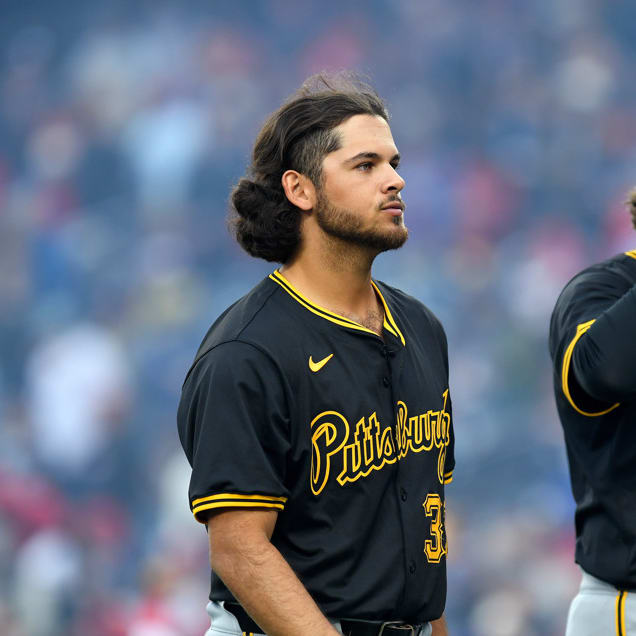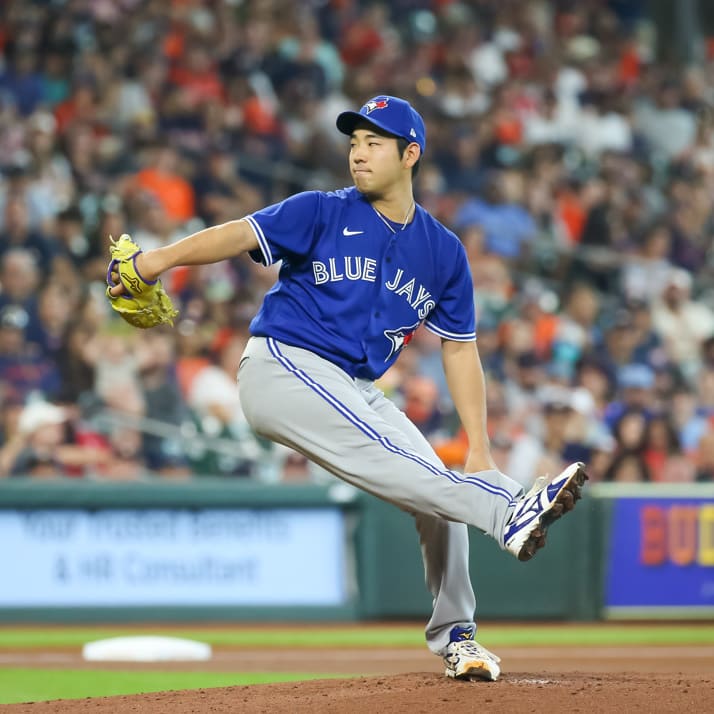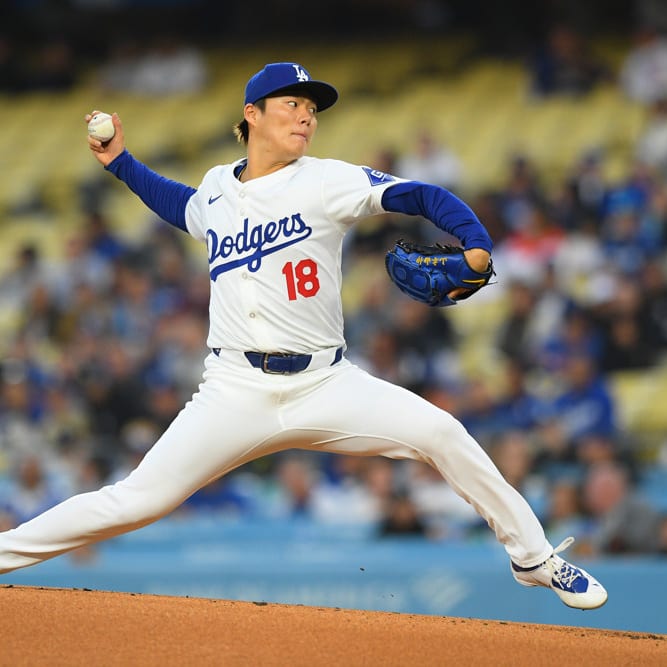This article is part of our The Saber's Edge series.
Byron Buxton has been a disappointment for his owners the last few seasons. He is highly ranked by many prospect lists but hasn't come close to living up to expectations. Injuries have limited his minor league playing time, and when he has been in the majors, he has struggled, hitting .197/.239/.320. Other prospects have struggled for a couple seasons before taking off (see Gregory Polanco). Some took more than a few seasons until they found their groove (Chris Davis). And others never do find it, like Brandon Wood or Delmon Young.
This week, I am going to look at how often a ranked prospect contributes at the major league level and how much patience should an owner have with the prospect.
Gambling on which prospects will be productive is just that, a gamble. In keeper or dynasty leagues, a highly touted prospect usually is owned from the point he is drafted (or even before) until he makes it to the majors or completely fails.
To figure out the point to finally move on from a prospect, I will use Baseball America's top 100 prospect lists and look at the time frame in which a prospect becomes a productive regular. We have our own good prospect rankings here at RotoWire, but the Baseball America rankings have one huge advantage, time. Their rankings started back in 1990 and can allow us to look at a larger pool of players.
Pitchers
Projecting pitching prospects is such a crapshoot. Back
Byron Buxton has been a disappointment for his owners the last few seasons. He is highly ranked by many prospect lists but hasn't come close to living up to expectations. Injuries have limited his minor league playing time, and when he has been in the majors, he has struggled, hitting .197/.239/.320. Other prospects have struggled for a couple seasons before taking off (see Gregory Polanco). Some took more than a few seasons until they found their groove (Chris Davis). And others never do find it, like Brandon Wood or Delmon Young.
This week, I am going to look at how often a ranked prospect contributes at the major league level and how much patience should an owner have with the prospect.
Gambling on which prospects will be productive is just that, a gamble. In keeper or dynasty leagues, a highly touted prospect usually is owned from the point he is drafted (or even before) until he makes it to the majors or completely fails.
To figure out the point to finally move on from a prospect, I will use Baseball America's top 100 prospect lists and look at the time frame in which a prospect becomes a productive regular. We have our own good prospect rankings here at RotoWire, but the Baseball America rankings have one huge advantage, time. Their rankings started back in 1990 and can allow us to look at a larger pool of players.
Pitchers
Projecting pitching prospects is such a crapshoot. Back in 2003, Joe Sheehan came up with the acronym TINSTAAPP which means "There is no such thing as a pitching prospect." The gist of the idea is that pitching prospects rarely work out. The reasons for failure can be that the pitcher never gains any command or can't develop a breaking pitch. The main failure cause seems to be injuries. Even with the grim future, though, some of these pitchers work out.
Here are the facts looking at all the Baseball America prospect rankings from 1990 to 2010. I am not including the most recent seasons, so the player has time to develop in the minors and hopefully become an above average MLB
regular/fantasy asset. I used 3 WAR as the cutoff to find the top pitchers who make a difference. For reference, in 2015, 32 pitchers had a WAR greater than three.
Pitchers: 489
Made it to the majors: 448 (92%)
> 100 IP in career: 372 (76%)
Total fWAR > 2: 269 (55%)
One 3 WAR season: 140 (29%)
3 WAR Season year 1: 44 (9%)
3 WAR season in first 2 seasons: 75 (15%)
3 WAR season in first 3 seasons: 95 (19%)
3 WAR season in first 4 seasons: 115 (23%)
3 WAR season in first 5 seasons: 127 (26%)
Overall, only about 3 in 10 top-100 pitching prospects become elite starters. Heck, about 1 in 4 never even throw more than 100 MLB innings and little more than 50 percent have positive production. Even fewer make this leap in their first MLB season. Muted expectations must be used with pitching prospects.
As can be seen, it may take a while for a prospect to reach the top level, but after four seasons a fantasy owner should have a good idea if the pitching prospect will work out. Additionally, one might look to pick up pitchers who have "failed" in their first couple season and hope they get it together.
Now, what if the owner is in a shallower league and only the top prospects are owned? Here are the same numbers for the pitchers ranked in the top 20.
Pitchers: 101
Made it to the majors: 92 (91%)
> 100 IP in career: 85 (84%)
Total fWAR > 2: 77 (77%)
One 3 WAR season: 51 (51%)
3 WAR Season year 1: 4 (4%)
3 WAR season in first 2 seasons: 19 (19%)
3 WAR season in first 3 seasons: 36 (36%)
3 WAR season in first 4 seasons: 43 (43%)
3 WAR season in first 5 seasons: 48 (48%)
The rate in which the good pitchers make it to the majors is better, but it still takes some until their third season to prove a usable option is shallow leagues. Jake Arrieta was one of the late bloomers who saw his big season happen in year 5 after being traded to the Cubs. Teams, just like fantasy owners, can get frustrated with a player and just want to move on. I like keeping track of failed prospects on the move to see if the new team can bring out the old shine.
Now, how is an owner to deal with these sad results? The method I use is to look for pitchers close to the majors (drafted college pitchers) or lesser prospects in Double-A or Triple-A. I would like to find out relatively soon if the pitcher can cut it in the majors. Waiting three to four minor league seasons, and up to four major league seasons, is just too long to wait.
Hitters
Hitters don't seem to change as much and as often as pitchers. They are a little more stable, which can be a plus in projecting them and minus because little hope exists for them to turn it around as they move up the ranks. With hitting prospects, I look for three red flags that can keep them out of the majors: high strikeout rate, lack of power and lack of production for a position (can only play first base but hits like a shortstop). Most failed prospects easily fall into one of these categories.
Using the same method as pitchers, here is when hitting prospects become productive.
Hitters: 579
Made it to the majors: 529 (92%)
> 300 PA in career: 446 (77%)
Total fWAR > 2: 338 (59%)
One 3 WAR season: 233 (40%)
3 WAR Season year 1: 15 (3%)
3 WAR season in first 2 seasons: 55 (10%)
3 WAR season in first 3 seasons: 109 (19%)
3 WAR season in first 4 seasons: 150 (26%)
3 WAR season in first 5 seasons: 182 (32%)
Pitcher and hitters have about the same chance to make it to the majors and contribute. Hitters, though, are more likely to be productive (29 percent for pitchers vs. 40 percent for hitters) even though it may take them the same amount of time, four seasons, to reach that level.
Now, a look at only the top-20 hitting prospects from the time frame.
Hitters: 173
Made it to the majors: 156 (90%)
> 300 PA in career: 148 (85%)
Total fWAR > 2: 124 (72%)
One 3 WAR season: 98 (57%)
3 WAR Season year 1: 7 (4%)
3 WAR season in first 2 seasons: 27 (16%)
3 WAR season in first 3 seasons: 51 (29%)
3 WAR season in first 4 seasons: 67 (39%)
3 WAR season in first 5 seasons: 79 (45%)
Again, a little higher success rate for the top-rated hitters compared to the pitchers and almost six of 10 of these hitters become good major leaguers. Additionally, it still takes until the hitter's third season in the majors to start seeing results. This is definitely the case with Gregory Polanco, who struggled to hit higher than .250 in his first two seasons with 16 total home runs. This season he is hitting .310 with eight home runs.
The key point in waiting for prospects to be major league contributors is to limit expectations, as half almost completely flame out.
For those who eventually have productive seasons, high-level production doesn't happen immediately, but can take a few seasons to materialize.
For us Byron Buxton owners, we might need to wait another season or two to be rewarded with the production that was promised.










